昨夕4時過ぎの横浜
あっという間にこんな感じに!

マニラの社員(フィリピン人5人)に日本語を覚えて貰おう
ということで、本日から真面目にレッスンをすることになりました
と言うのも、REAL4がJapanese のソフトなので、日本語は不可欠です
漢字も当然出てきます。
2年後には全員が、完璧な日本語を話せるようになることを願って
SKYPEを利用して日本語を学んでもらいたいと考えています
Lesson1
Hiragana - ひらがな
The first step to learning the Japanese language is to learn the alphabet. Or, at least, to learn the sounds that exist in the language. There are absolutely no "tones" in Japanese like in many other asian languages and there are only 2 exceptions within the alphabet which will be explained later. The Japanese alphabet does not contain letters but, instead, contains characters and, technically, they are not alphabets but character sets. The characters in the chart below are called Hiragana. Hiragana is the main alphabet or character set for Japanese. Japanese also consists of two other character sets - Kanji (Chinese characters), which we will get into later, and another alphabet/character set, Katakana, which is mainly used for foreign words. Katakana will be covered in Lesson 2. Don't wait to move on until you have all Hiragana characters memorized - learn them as you continue to go through the other lessons.
There are 5 vowels in Japanese. (a), pronounced "ahh", (i), pronounced like "e" in "eat", (u), pronounced like "oo" in "soon", (e), pronounced like "e" in "elk", and (o), pronounced "oh". All Hiragana characters end with one of these vowels, with the exception of (n). The only "consonant" that does not resemble that of English is the Japanese "r". It is slightly "rolled" as if it were a combination of a "d", "r", and "l".
あ
a い
i う
u え
e お
o
か
ka き
ki く
ku け
ke こ
ko
が
ga ぎ
gi ぐ
gu げ
ge ご
go
さ
sa し
shi す
su せ
se そ
so
ざ
za じ
ji ず
zu ぜ
ze ぞ
zo
た
ta ち
chi つ
tsu て
te と
to
だ
da ぢ
ji づ
zu で
de ど
do
な
na に
ni ぬ
nu ね
ne の
no
は
ha ひ
hi ふ
fu へ
he ほ
ho
ば
ba び
bi ぶ
bu べ
be ぼ
bo
ぱ
pa ぴ
pi ぷ
pu ぺ
pe ぽ
po
ま
ma み
mi む
mu め
me も
mo
や
ya ゆ
yu よ
yo
ら
ra り
ri る
ru れ
re ろ
ro
わ
wa を
wo ん
n/m
Combinations
きゃ
kya きゅ
kyu きょ
kyo
ぎゃ
gya ぎゅ
gyu ぎょ
gyo
しゃ
sha しゅ
shu しょ
sho
じゃ
ja じゅ
ju じょ
jo
ちゃ
cha ちゅ
chu ちょ
cho
にゃ
nya にゅ
nyu にょ
nyo
ひゃ
hya ひゅ
hyu ひょ
hyo
びゃ
bya びゅ
byu びょ
byo
ぴゃ
pya ぴゅ
pyu ぴょ
pyo
みゃ
mya みゅ
myu みょ
myo
りゃ
rya りゅ
ryu りょ
ryo
Here is a Printable Hiragana Chart (PDF - get Adobe Acrobat Reader).
Exceptions:
1. The Hiragana は (ha) is pronounced "wa" when it immediately follows the topic of the sentence. This character is usually only pronounced "ha" when it is part of a word.
2. The Hiragana へ (he) is pronounced "e" when it immediately follows a place or direction. Both of these are very simple to detect.
Click here if you'd like to know why these two exceptions exist.
Note: You probably noticed in the chart above that there are 2 characters pronounced "zu" and 2 characters pronounced "ji". The characters づ (zu) and ぢ (ji) are very rarely used. づ (zu) only occurs when there is a つ (tsu) in front of it like in つづく (tsuzuku - to continue) or when a Kanji (Chinese character) that has a reading which starts with つ (tsu) is paired at the end with another character changing the つ (tsu) to a づ (zu). The same applies for the Hiragana ぢ (ji). Since they are used so rarely I wouldn't worry about them too much. I will let you know whenever we come upon a word in which they are used.
Some people wonder why "yi", "ye", "wi", "wu", and "we" are missing. There aren't characters for "yi", "ye", or "wu". There is a ゐ (wi) and a ゑ (we) but these were deemed obsolete in 1946 and were replaced by い (i) and え (e) respectively.
終わり
如何でしょうか?
あっという間にこんな感じに!

マニラの社員(フィリピン人5人)に日本語を覚えて貰おう
ということで、本日から真面目にレッスンをすることになりました
と言うのも、REAL4がJapanese のソフトなので、日本語は不可欠です
漢字も当然出てきます。
2年後には全員が、完璧な日本語を話せるようになることを願って
SKYPEを利用して日本語を学んでもらいたいと考えています
Lesson1
Hiragana - ひらがな
The first step to learning the Japanese language is to learn the alphabet. Or, at least, to learn the sounds that exist in the language. There are absolutely no "tones" in Japanese like in many other asian languages and there are only 2 exceptions within the alphabet which will be explained later. The Japanese alphabet does not contain letters but, instead, contains characters and, technically, they are not alphabets but character sets. The characters in the chart below are called Hiragana. Hiragana is the main alphabet or character set for Japanese. Japanese also consists of two other character sets - Kanji (Chinese characters), which we will get into later, and another alphabet/character set, Katakana, which is mainly used for foreign words. Katakana will be covered in Lesson 2. Don't wait to move on until you have all Hiragana characters memorized - learn them as you continue to go through the other lessons.
There are 5 vowels in Japanese. (a), pronounced "ahh", (i), pronounced like "e" in "eat", (u), pronounced like "oo" in "soon", (e), pronounced like "e" in "elk", and (o), pronounced "oh". All Hiragana characters end with one of these vowels, with the exception of (n). The only "consonant" that does not resemble that of English is the Japanese "r". It is slightly "rolled" as if it were a combination of a "d", "r", and "l".
あ
a い
i う
u え
e お
o
か
ka き
ki く
ku け
ke こ
ko
が
ga ぎ
gi ぐ
gu げ
ge ご
go
さ
sa し
shi す
su せ
se そ
so
ざ
za じ
ji ず
zu ぜ
ze ぞ
zo
た
ta ち
chi つ
tsu て
te と
to
だ
da ぢ
ji づ
zu で
de ど
do
な
na に
ni ぬ
nu ね
ne の
no
は
ha ひ
hi ふ
fu へ
he ほ
ho
ば
ba び
bi ぶ
bu べ
be ぼ
bo
ぱ
pa ぴ
pi ぷ
pu ぺ
pe ぽ
po
ま
ma み
mi む
mu め
me も
mo
や
ya ゆ
yu よ
yo
ら
ra り
ri る
ru れ
re ろ
ro
わ
wa を
wo ん
n/m
Combinations
きゃ
kya きゅ
kyu きょ
kyo
ぎゃ
gya ぎゅ
gyu ぎょ
gyo
しゃ
sha しゅ
shu しょ
sho
じゃ
ja じゅ
ju じょ
jo
ちゃ
cha ちゅ
chu ちょ
cho
にゃ
nya にゅ
nyu にょ
nyo
ひゃ
hya ひゅ
hyu ひょ
hyo
びゃ
bya びゅ
byu びょ
byo
ぴゃ
pya ぴゅ
pyu ぴょ
pyo
みゃ
mya みゅ
myu みょ
myo
りゃ
rya りゅ
ryu りょ
ryo
Here is a Printable Hiragana Chart (PDF - get Adobe Acrobat Reader).
Exceptions:
1. The Hiragana は (ha) is pronounced "wa" when it immediately follows the topic of the sentence. This character is usually only pronounced "ha" when it is part of a word.
2. The Hiragana へ (he) is pronounced "e" when it immediately follows a place or direction. Both of these are very simple to detect.
Click here if you'd like to know why these two exceptions exist.
Note: You probably noticed in the chart above that there are 2 characters pronounced "zu" and 2 characters pronounced "ji". The characters づ (zu) and ぢ (ji) are very rarely used. づ (zu) only occurs when there is a つ (tsu) in front of it like in つづく (tsuzuku - to continue) or when a Kanji (Chinese character) that has a reading which starts with つ (tsu) is paired at the end with another character changing the つ (tsu) to a づ (zu). The same applies for the Hiragana ぢ (ji). Since they are used so rarely I wouldn't worry about them too much. I will let you know whenever we come upon a word in which they are used.
Some people wonder why "yi", "ye", "wi", "wu", and "we" are missing. There aren't characters for "yi", "ye", or "wu". There is a ゐ (wi) and a ゑ (we) but these were deemed obsolete in 1946 and were replaced by い (i) and え (e) respectively.
終わり
如何でしょうか?










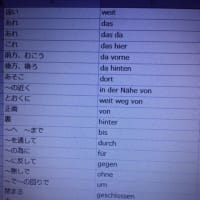
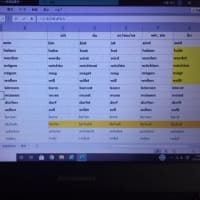
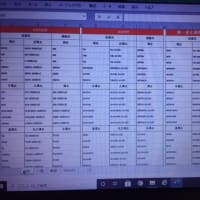
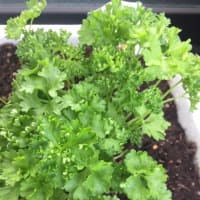

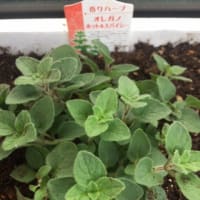
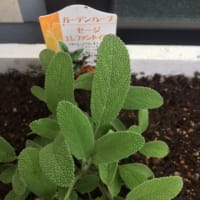

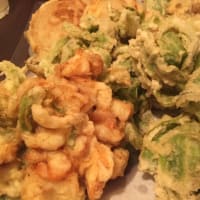
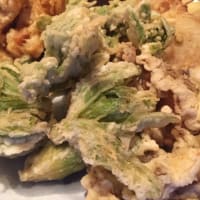
※コメント投稿者のブログIDはブログ作成者のみに通知されます